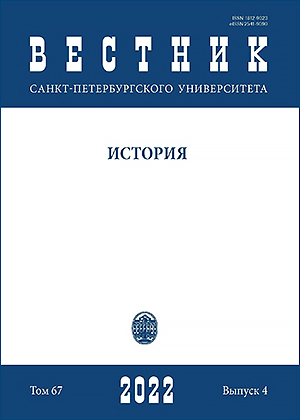Geoarchaeology, Age and Chronology of the Zhokhov Site
DOI:
https://doi.org/10.21638/spbu02.2022.413Abstract
The Zhokhov site, investigated in 1989–1990 and 2000–2005, is located at 76°N in a remote part of the East Siberian Arctic. Excavations yielded tens of thousands of artifacts and faunal remains including the oldest anthropological remains known in the high arctic regions up to date. The culture-bearing deposits appear to represent the backfill of ice wedge casts formed after the site was abandoned when the island area became isolated due to the development of the post-glacial marine transgression. A large sample of radiocarbon ages obtained on various materials (n = 102) provides a chronology for the site, which was occupied 8300–7800 14С years ago. There were multiple occupation episodes, but it is not possible to estimate their duration with precision (within less than 50–100 years). The most intense human activity occurred within the interval 8050–7900 radiocarbon years BP, or ca. 9000 calBP but overall human occupation of the site spans roughly 2000 years. This is the oldest known archaeological site in the high-latitude Arctic. The identification and analysis of habitation episodes at the Zhokhov site has important implications for the study of Palaeolithic sites. The radiocarbon chronology indicates that repeated / cyclic human habitation at the same place is possible for up to 2000 years and possibly longer. Repeated or cyclic human occupation in the Zhokhov island area was possible due to locally available food and material resources. Thus, the radiocarbon dates provide more than chronomentric or chronological data; they are a source of information source about human ecology and its role in the evolution of culture.
Keywords:
Zhokhov site, arctic Stone Age, geoarchaeology, site formation, radioacarbon dating, chronometry, chronology, habitation episodes, human behavior, cultural complexity, subsistence patterns
Downloads
References
Downloads
Published
How to Cite
Issue
Section
License
Articles of "Vestnik of Saint Petersburg University. History" are open access distributed under the terms of the License Agreement with Saint Petersburg State University, which permits to the authors unrestricted distribution and self-archiving free of charge.





